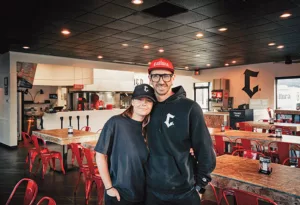
Home » Creative mechanisms said needed to fund research
Creative mechanisms said needed to fund research
Scientists foresee potential crisis as government, drug industry support weakens
December 6, 2012
Scientists must look to innovative kinds of private investment for future resources, say two faculty members at Baltimore's Johns Hopkins University, in a commentary to be published in the Dec. 12 issue ofThe Journal of the American Medical Association.
Dr. Hamilton Moses III, an adjunct professor of neurology and one-time chief physician of The Johns Hopkins Hospital, and Dr. E. Ray Dorsey, an associate professor of neurology at the Johns Hopkins University School of Medicine, predict an ever-diminishing role for government and drug company funding of basic biomedical research. Current negotiations in Washington, D.C., over sequestration and the so-called "fiscal cliff" provide an opportunity to rethink fundamentally the funding of biomedical research, they say.
Moses and Dorsey point to a decade of flat government funding for biomedical research, higher-than-ever costs of clinical trials, reduced drug industry investment, and the threat of deep cuts to the federal research budget without congressional action by January. Based on such factors, they warn that biomedical innovation faces a crisis unless creative new sources of funding are pursued.
"Regardless of what happens in Congress, biomedical research must look to the private sector and not the federal government as the source of new funds," they say.
Dorsey adds, "The uncertainty of federal support of biomedical research now and in the near term only makes the need to look to the private sector for support more certain."
Moses and Dorsey have business experience on top of their medical credentials. Moses, a management consultant, runs the Alerion Institute, which conducts studies on research policy, and Alerion Advisors LLC, which advises nonprofits and corporate boards on strategy, organization, and governance. Dorsey is an associate professor at the Johns Hopkins Carey Business School.
Moses says the National Institutes of Health, which supports $32 billion a year for research, already has reduced the proportion of grants to individual investigators, the historical producers of most biomedical advances. It's focusing, he says, on collaborations, multicenter clinical trials, and large-scale projects such as the Human Genome Project.
Inflation associated with conducting research at universities is running at three to four times the base U.S. rate of inflation, decreasing the amount of research by one-third every three years, he adds.
Meanwhile, Moses and Dorsey say, the pharmaceutical and drug device companies, which contribute roughly two-thirds of the estimated $100 billion spent each year on biomedical research in the United States, are focused on large clinical trials and late-stage research, rather than the basic research that fuels future innovation. He says they are, understandably, spending research dollars on projects most likely to yield short-term returns, even at the expense of investment in diseases that are severe, common, and cannot be prevented or treated effectively.
Moses notes that only 5 percent of research funding comes from private charities and foundations, resources that already are strained. He contends the best way forward is to create new forms of funding, such as mutual funds for individual and institutional investors, biomedical research bonds, or patent pools to share risks and rewards inherent in innovation and technology transfer.
"These measures are analogous to those used to build sports arenas, ports, bridges or highways, lessening the financial burden on government," Dorsey and Moses assert. "They also promise to lower barriers that prevent collaboration between competing universities, companies, and researchers."
Some areas of science, such as basic biology and mechanisms of disease, likely won't yield financial value to its discoverer, and consequently should continue to be a focus of the NIH, Moses says.
But to realize the benefits of translational research and the development of marketable new therapies and good businesses, funding must come increasingly from sources other than the government, he says. Moses' idea is to create new financial instruments that invite individuals, investors, or pension funds to invest in research bonds that help cover the cost of making new scientific discoveries. Such bonds would draw not only those looking for financial rewards, but also those with a personal stake in a disease, a willingness to delay financial returns or a desire to help others. Buying a "cancer bond" or an "autism bond" has appeal for many, he adds.
"These bonds may not return anything in five to 10 years, or ever," says Moses, who believes raising $10 billion a year or more this way is doable. "Science is a form of speculation and the risk of failure is quite high. Yet it's precisely the high-risk, high-reward scientific endeavors that aren't getting funded anymore. We need to find a way to ensure they are. Clinical need and scientific opportunity far outstrip our current ability to support innovation."
Special Report
Related Articles


